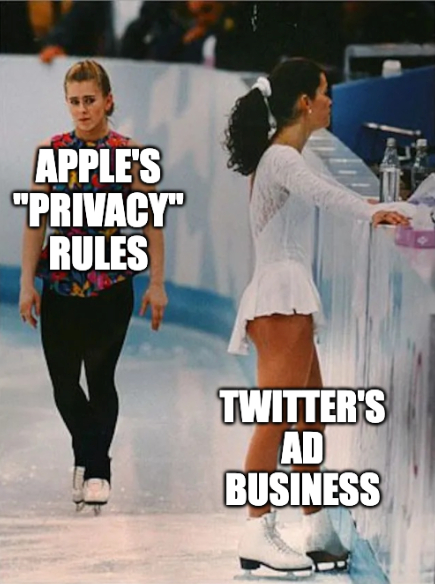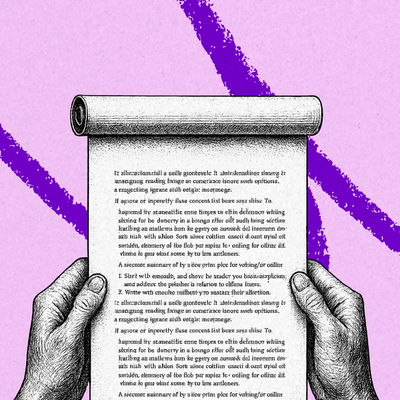
Sponsored By: NanoVMS
This article is brought to you by NanoVMS, a deep-tech startup based in San Francisco looking for investors.
To purchase Twitter, Elon loaded the company with over $13B in debt. That means he has to increase Twitter’s cash flow—fast. The company will be paying $1B a year just in interest payments. One of many problems is that the company only did $632M in operating cash flow last year and has averaged roughly $1B over the last five years in yearly operating cash flows. Meaning that Elon will have to increase Twitter’s last year’s cash flow by roughly $380M just to cover the costs of the loans. Add in all the other costs of running Twitter and the company is in a tough financial spot. They need to scale revenue, increase productive investment, and simultaneously decrease costs. Typically in finance you can only pick two of those.
Elon has two levers to turn Twitter into the cash machine he needs it to be in order to service his debt payments. He can raise advertising revenue or add a subscription component to the business. Unfortunately, both of these are bad options.
Twitter's advertising machine is broken and unsalvageable because of Elon’s brand risk and the inability to build a direct response platform. Subscriptions will only serve to disincentivize creator behavior and thus will make the product worse. Even if he does figure these things out, the elephant in the room is that the dominant social paradigm has shifted to video.
To alleviate these problems, Twitter needs to reinvent what it means to be a consumer internet company. The company should use its interest graph to build an algorithmic marketplace that allows outside parties to change the content format and engagement modalities.
I get it—I’m just as tired as you are of this story. Politicians, pundits, podcasters—everyone is trying to get their pound of Elon flesh, hoping to drive clicks to their website. Missing in all this chatter is a thoughtful analysis of what the problems and potential resolutions are. But this is a company worthy of serious study. Twitter is a perfect case study of the shifting power dynamics of the ad market and how to make money in this era of the internet.
Alter the product paradigm
Twitter is a special place because you can have porn, a note about policy from the president of the United States, and a highlight from last night’s World Series game all in a row, in one browser. There isn’t anything else quite like it—especially because Twitter stopped making great products in 2013.
On March 21, 2006, Jack Dorsey sent the very first tweet informing the world he was "just setting up my twttr." (This same tweet sold as an NFT for $2.9M at the height of the crypto craze.) The product started with social updates, with many early users letting people know what they were up to. Over time users started to share news and events as they happened, often using Twitter as a live-blogging platform. In 2007 the hashtag, which allowed for users to easily follow specific events or topics, was created. The company tried various experiments, but all were focused on the text format. It wasn’t until their IPO in 2013 that native photos and videos were added to the feed. At that point, they stopped launching significant new products. There were half-hearted attempts at various things (including a music product called Twitter #music in 2013 that the world has collectively forgotten about) but at its heart, Twitter has stayed the same.
The focus on text isn’t necessarily a bad thing! Prose is great for a certain subset of the population. However, the data has clearly shown that the average human prefers video. Instagram’s usage grows dramatically whenever the volume of video is increased. TikTok's dominance is largely due to its commitment to short-form video. YouTube launched its TikTok clone, Shorts, two years ago and already has 1.5B users. In short: people love video, and Twitter has failed to adapt. This is a massive problem for their growth. They have likely hit the local maxima of their product paradigm. They’ll be able to add incremental growth, but their hockey stick days are far behind them.
In response, Elon will be tempted to build a video product.“ We need to contort to this consumer shift and relaunch Vine!” (In fact, they already told engineers to start building it three days ago). This is a mistake. Can they really do it better than Meta, TikTok, or YouTube? Why does Twitter have a unique right to win this market?
There is a bigger opportunity than mere catch-up.
Bill Gates defined a platform as the following: “A platform is when the economic value of everybody that uses it exceeds the value of the company that creates it.” Typically a platform company will attempt to capture the value created on its platform via revenue tax (as Apple does), but there is always a quantifiable activity that the platform take rate is based on. What is compelling and so challenging about Twitter’s text paradigm is that all of the value from the platform is soft power. All of the good stuff that results from Twitter usage happens outside of the website. Authors will tweet about their books that consumers then go purchase on Amazon. I’ll publish a tweet about my recent article that readers will pay to read on our website. Readers will then email me asking to meet which I can turn into additional opportunities. More abstractly, politicians will tweet about issues that get people going and then translate that energy into votes.
The monetization opportunities resulting directly from text are subpar. Being a text media company has been a bad business since the internet got started. But the opportunity resulting from those words is significant.
Rather than trying to be a fast follower of other consumer internet companies' products, the company needs to play a different game. This product improvement is necessitated by the changes in consumer behavior but it is also because existing monetization options are so broken.
The ad experience will never improve
Twitter’s business is about 85% brand advertising and 15% direct response advertising. Brand advertising is when a company can’t directly attribute consumer behavior in response to the ad. Think car commercials at the Superbowl. Direct response is when a company can track user behavior—e.g., they clicked on a sneaker ad and made a purchase. Both of these businesses stand at risk of fundamental collapse.
Direct response: A decade after their competitors, this year the company finally built sufficient infrastructure to run a direct response advertising business. For the first time, companies will be able to figure out if they are running an ROI-positive campaign on Twitter’s service. This is the product that propelled Facebook to a trillion-dollar valuation. In a cruel twist of fate, Twitter’s launch coincides with Apple’s decision to kneecap the entire direct response ad industry.
The Only Subscription
You Need to
Stay at the
Edge of AI
The essential toolkit for those shaping the future
"This might be the best value you
can get from an AI subscription."
- Jay S.
Join 100,000+ leaders, builders, and innovators

Email address
Already have an account? Sign in
What is included in a subscription?
Daily insights from AI pioneers + early access to powerful AI tools











Comments
Don't have an account? Sign up!
Really good analysis Evan!
How do you think a "reimagined feed" would incentivize creator behavior?
What so many creators love about Twitter is all the value they're capturing there.